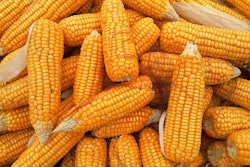China to Start Importing Soybean meal From Argentina
For the first time ever, China will allow the import of soybean meal from Argentina after a trade deal was announced in Buenos Aires on Tuesday.
Argentina is the world’s largest exporter of soybean meal. The U.S. is the third largest soybean meal exporter after Brazil.
Argentina has attempted for years to access the Chinese soymeal market.
This is the second major agricultural announcement by China in as many days, on Monday China certified 25 Brazilian packing plants for exports, and illustrates China’s continued commitment to diversify its global agricultural supply chain.
China has the world’s largest hog herd and the world’s largest poultry flock (layers + broilers).
FBN’s Take On What It Means: We believe that it's too early to tell, but this move by the Chinese to allow soybean meal imports from Argentina can be mixed for the U.S. farmer. Because China has an extensive and politically sensitive domestic crush business, soybean meal imports from Argentina could be muted. If China begins to materially import Argentina soybean meal, this could create opportunities for U.S. meal to work into other export destinations which would be supportive of the U.S. export program.
2019 Australia Wheat Production Estimated to Decline By 10% YoY
On Tuesday, the Australian Bureau of Agricultural and Resource Economics and Sciences (ABARES) lowered the country’s wheat production by 10% as prolonged drought weather across the country's east coast continues.
ABARES is estimating 19/20 wheat production at 19.2 MMT, down from its previous estimate in June of 21.9 MMT. In the August WASDE, the USDA estimated Australian wheat production at 21.0 MMT.
Should ABARES’s production forecast materialize, it would be more than 22% below the 10-year average of 24.7 MMT, and would represent a third straight year of lower than average production.
FBN’s Take On What It Means: Another year and another drought in Australia can be a positive for the U.S. white wheat and HRS producers. While most of Australia’s domestically consumed wheat is produced in eastern Australia and wheat for exports is produced in the western part of the country, we believe that another drought has the ability to support U.S. white wheat and spring wheat exports into Asia.
The risk of trading futures, hedging, and speculating can be substantial. FBN BR LLC (NFA ID: 0508695)










